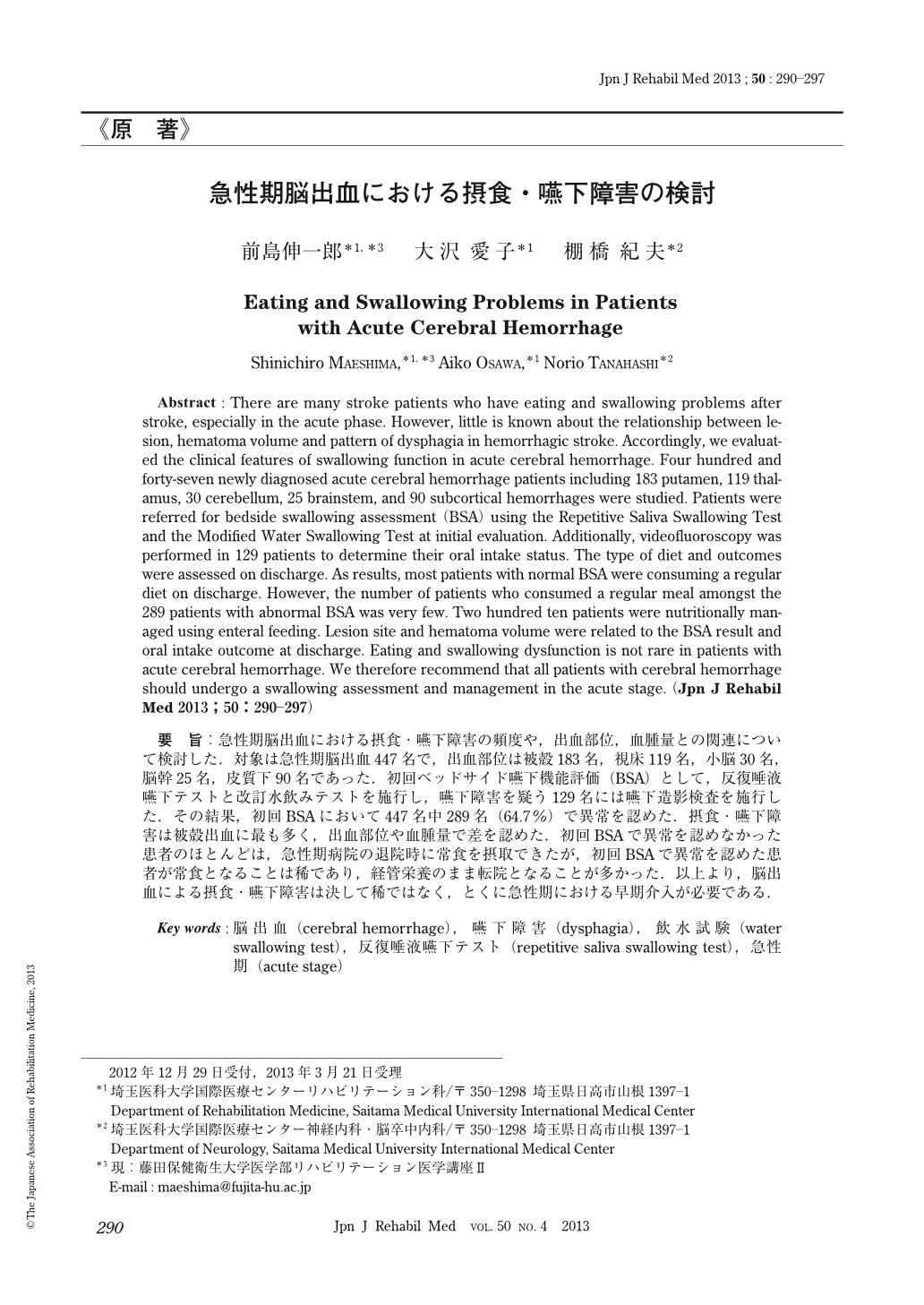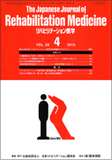Japanese
English
- 販売していません
- Abstract 文献概要
- 1ページ目 Look Inside
- 参考文献 Reference
要旨:急性期脳出血における摂食・嚥下障害の頻度や,出血部位,血腫量との関連について検討した.対象は急性期脳出血447名で,出血部位は被殻183名,視床119名,小脳30名,脳幹25名,皮質下90名であった.初回ベッドサイド嚥下機能評価(BSA)として,反復唾液嚥下テストと改訂水飲みテストを施行し,嚥下障害を疑う129名には嚥下造影検査を施行した.その結果,初回BSAにおいて447名中289名(64.7%)で異常を認めた.摂食・嚥下障害は被殻出血に最も多く,出血部位や血腫量で差を認めた.初回BSAで異常を認めなかった患者のほとんどは,急性期病院の退院時に常食を摂取できたが,初回BSAで異常を認めた患者が常食となることは稀であり,経管栄養のまま転院となることが多かった.以上より,脳出血による摂食・嚥下障害は決して稀ではなく,とくに急性期における早期介入が必要である.
Abstract : There are many stroke patients who have eating and swallowing problems after stroke, especially in the acute phase. However, little is known about the relationship between lesion, hematoma volume and pattern of dysphagia in hemorrhagic stroke. Accordingly, we evaluated the clinical features of swallowing function in acute cerebral hemorrhage. Four hundred and forty-seven newly diagnosed acute cerebral hemorrhage patients including 183 putamen, 119 thalamus, 30 cerebellum, 25 brainstem, and 90 subcortical hemorrhages were studied. Patients were referred for bedside swallowing assessment (BSA) using the Repetitive Saliva Swallowing Test and the Modified Water Swallowing Test at initial evaluation. Additionally, videofluoroscopy was performed in 129 patients to determine their oral intake status. The type of diet and outcomes were assessed on discharge. As results, most patients with normal BSA were consuming a regular diet on discharge. However, the number of patients who consumed a regular meal amongst the 289 patients with abnormal BSA was very few. Two hundred ten patients were nutritionally managed using enteral feeding. Lesion site and hematoma volume were related to the BSA result and oral intake outcome at discharge. Eating and swallowing dysfunction is not rare in patients with acute cerebral hemorrhage. We therefore recommend that all patients with cerebral hemorrhage should undergo a swallowing assessment and management in the acute stage.

Copyright © 2013, The Japanese Association of Rehabilitation Medicine. All rights reserved.


